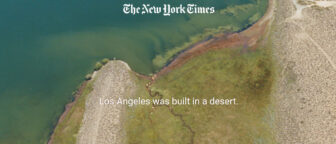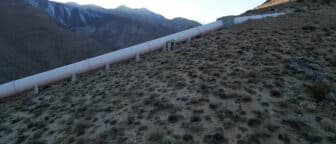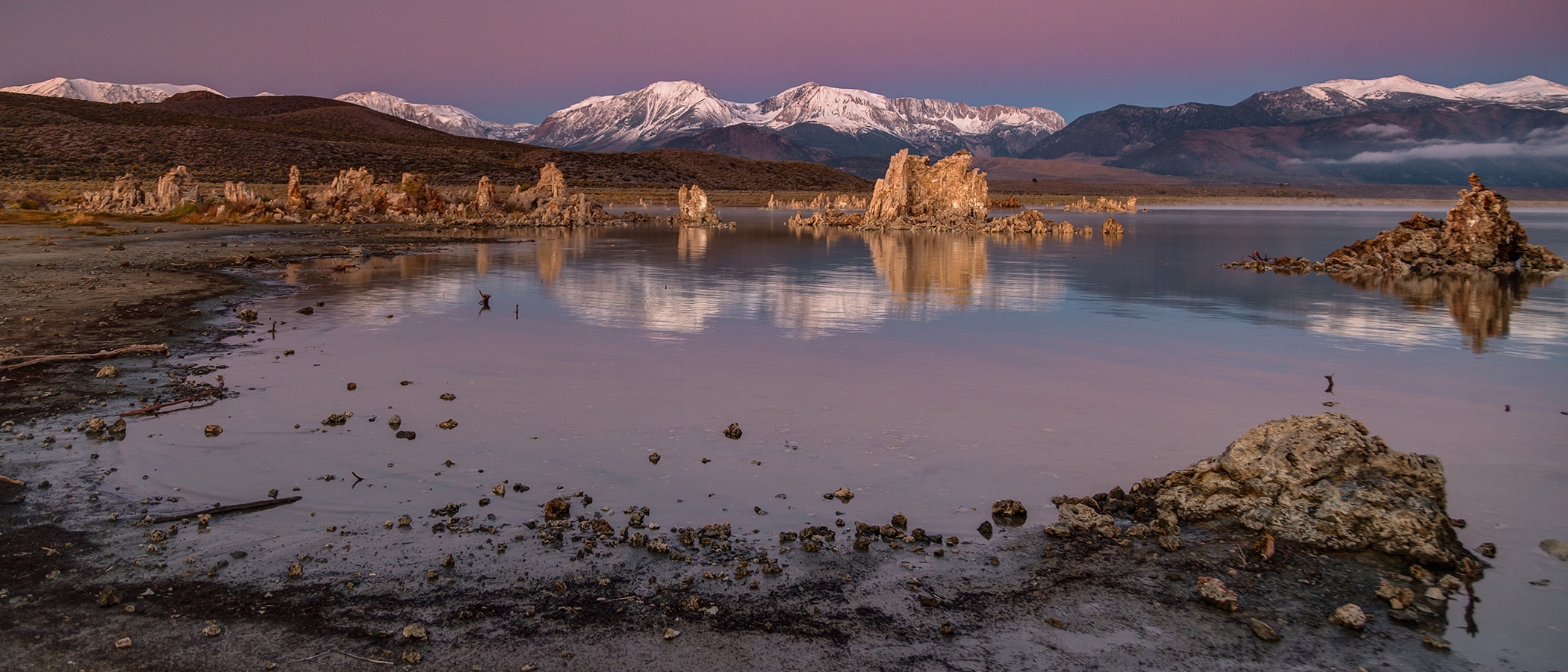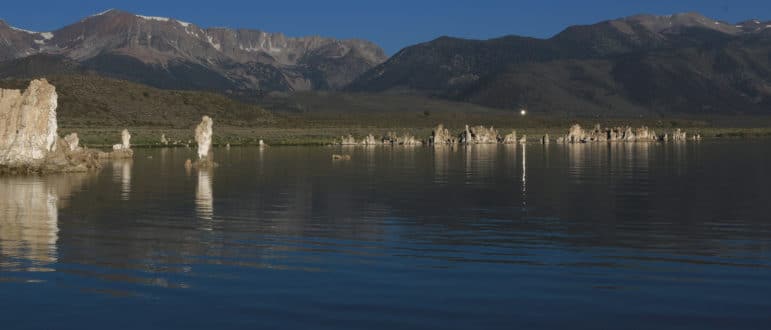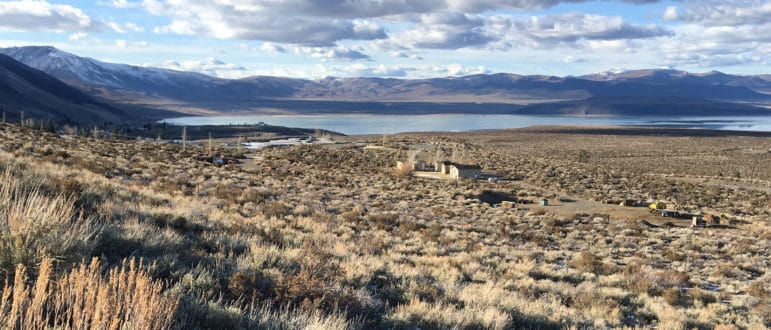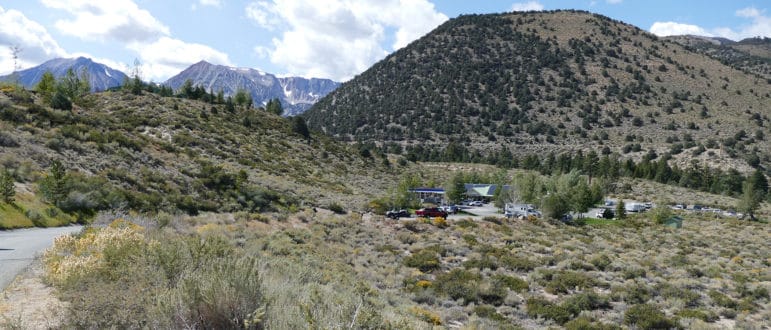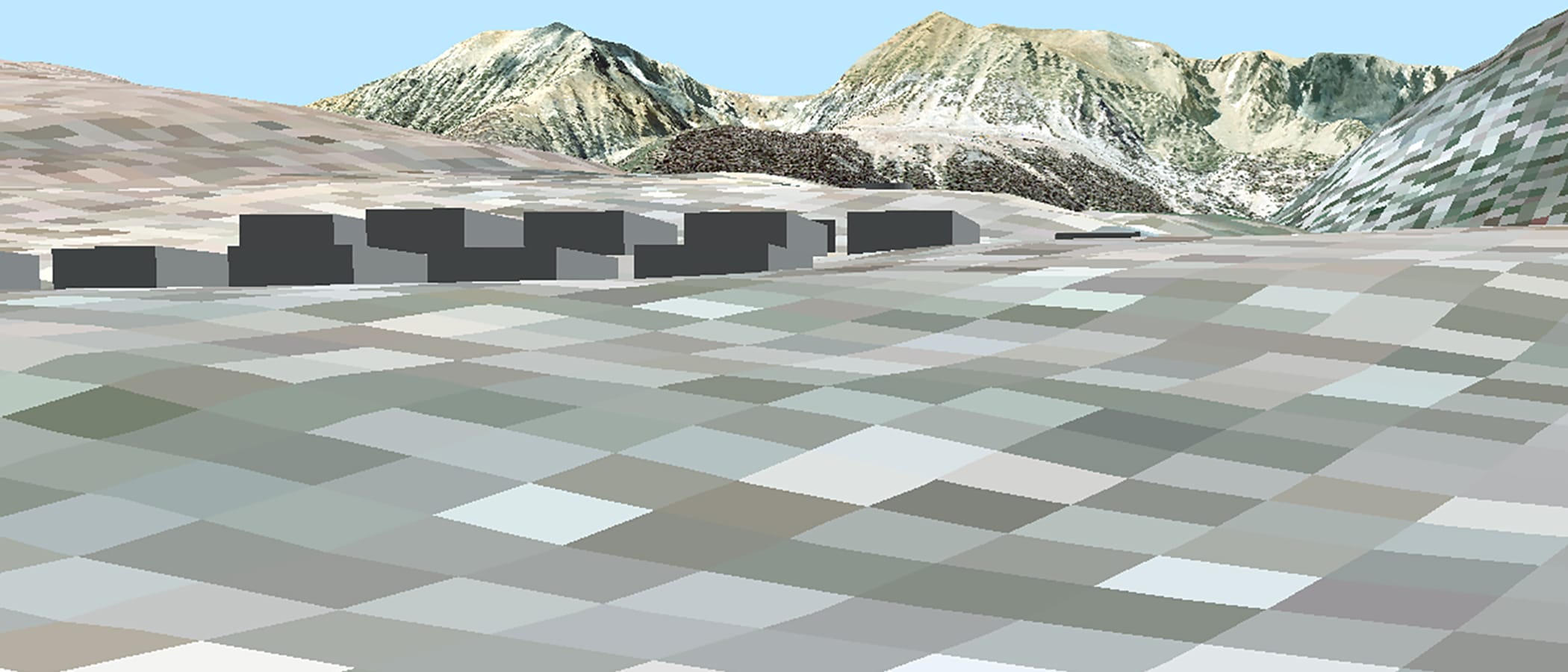
Tioga Inn proposed development
The proposed Tioga Inn was a 100-unit workforce housing development project associated with a hotel and restaurant that were approved in 1993 (but never built) at the site of the Mobil Gas Mart at the intersection of Highways 395 and 120 West just south of Lee Vining. The project Environmental Impact Report outlined five significant, unavoidable adverse impacts that would come with the project if it had been approved. These included impacts to pedestrian safety and scenic impacts to Mono Lake.
The Mono Lake Committee supports thoughtfully planned projects that respect the scenic resources at Mono Lake, presented workable solutions to help mitigate the safety and visual impacts, and urged the Mono County Board of Supervisors to demand better planning for this important area.
Latest update: Tioga Inn project denied on April 20, 2021
The Mono County Board of Supervisors considered the Tioga Inn project for the fourth time on Tuesday, April 20. After thoughtful public comment and short Board discussion a motion to approve the project failed in a 2–2 vote, which resulted in a denial of the project. Read more about the meeting here.
What is the Tioga Inn proposal?
The Tioga Inn Project is a 100 unit/150 bedroom workforce housing development project along with gas station expansion, 30,000-gallon propane tank, and wastewater treatment plant for the Mobil Tioga Gas Mart and Whoa Nellie Deli at the junction of Highways 395 and 120 West, approximately half a mile south of Lee Vining. The project is a Specific Plan Amendment, the third for the site, that expands on the previously-approved gas station, gas mart, deli/restaurant, ten units of workforce housing, and a hotel and hill-top restaurant. The proposed housing is not affordable and will be a market-rate rental opportunity for future employees of the new hotel-restaurant Tioga Inn complex.
The original Specific Plan was approved in 1993, but the hotel and restaurant have yet to be constructed. The Mono County Board of Supervisors have met and deliberated the Final Subsequent Environmental Impact Report with the latest Alternative #7—Hybrid (“Preferred Alternative”). Final approval, modification, or denial of the project is pending. A future hearing date has not been scheduled.
What are the impacts?
The Tioga Inn project proposes five significant, unavoidable adverse environmental impacts according to the Tioga Inn Specific Plan Amendment #3 (Project) and Final Environmental Impact Report (SEIR). These impacts include (1) aesthetic impacts to the scenic resources of Mono Lake, light and glare; (2) unsafe exposure of pedestrians and cyclists to highway traffic; (3) traffic safety impacts at the junction of Highways 395 and 120 West; (4) cumulative project impacts to the deer herd; (5) exposure of people and structures to catastrophic mudflows resulting from a nearby volcanic eruption.
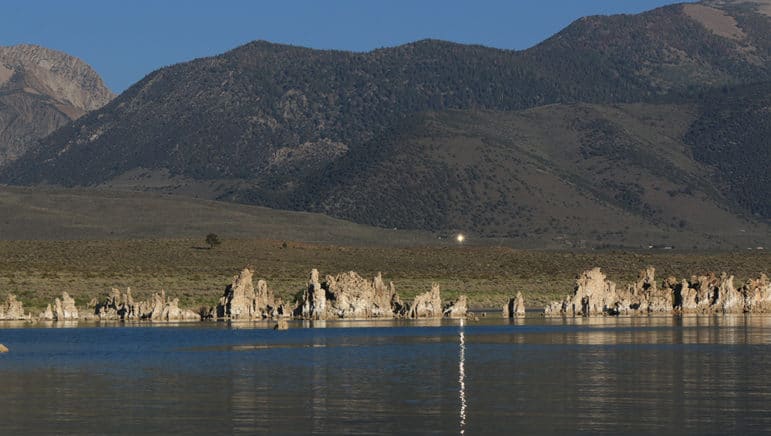
Why would Mono County consider approving the project?
The developer argues that the project would provide needed housing for Mono County, and has threatened the County to the extent “that if the hotel gets built without approval of this project, instead of the housing situation maintaining somewhat of the status quo, it’s going to get infinitely worse.”
From a practical, legal perspective, under the California Environmental Quality Act (CEQA), the entire project proposal needs to be recirculated. Neither the hotel nor the restaurant have been built since the original Specific Plan was approved in 1993 and much has changed on the ground and in the surrounding environment since the original Specific Plan was approved. Multiple amendments and review changes have modified the original project, and the current project amendment does not require a potentially feasible mitigation to be completed that could eliminate one of the significant impacts—the threat to pedestrian safety. The SEIR consultant and Mono County staff have asserted that there is no merit to the recirculation argument.
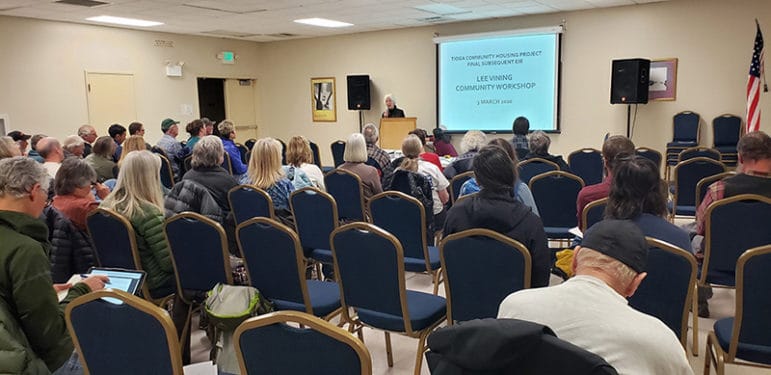
In the face of overwhelming opposition and a project history of over 1,000 comments urging for significant project changes or denial, the Supervisors must now consider whether the unavoidable adverse impacts are worth overriding for the minimal project benefits. The supervisors declined to immediately approve the Preferred Alternative as it was proposed in June 2020 and instead requested changes and additional mitigation measures to reduce impacts. Since the most recent August 6, 2020 hearing date, the latest proposed Alternative #7—Hybrid plan remains under review and consideration.
Why the impacts are not worth it
Mono Lake is among the natural wonders of the world, loved by millions. The California Supreme Court affirmed Mono Lake’s scenic value in its landmark 1983 Public Trust decision. Just as Los Angeles’ excessive water diversions imperiled the lake’s recreational and scenic uses, so too does a major commercial development that brings significant, adverse visual impacts to future visitors. Approving a project that impairs Mono Lake’s scenic value and diminishes the visitor experience is, by default, granting permission to erode the Public Trust.

The Tioga Inn project also carries a significant public safety impact. Without a safe pedestrian access route linking the future Tioga Inn residential and hotel complex with Lee Vining, kids, residents, and visitors moving back and forth between the two sites are exposed to busy highway traffic along Highways 395 and 120 West. The potential for upwards of 300 new residents, including kids, with no safe way to move between school, residences, the local market, Post Office, and friends—except by motor vehicle—is not just a nostalgic nod to 1980s-era leapfrog development, it’s poor planning.
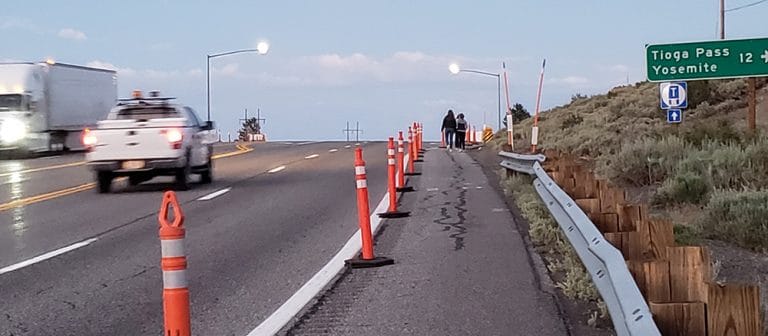
The lack of connectivity is a significant impact that genuinely upsets many in the community and Mono County. Mitigating this impact is possible. Unfortunately, the current Tioga Inn proposal asks the Supervisors to approve the project first, and six months later formally study the feasibility of pedestrian access.
The Committee supports thoughtfully planned projects that respect the scenic resources at Mono Lake, but the Tioga Inn, which still proposes five significant adverse impacts—not least among them, safety impacts to people—remains a challenge for both supporters of Mono Lake and residents of Lee Vining and the Mono Basin.
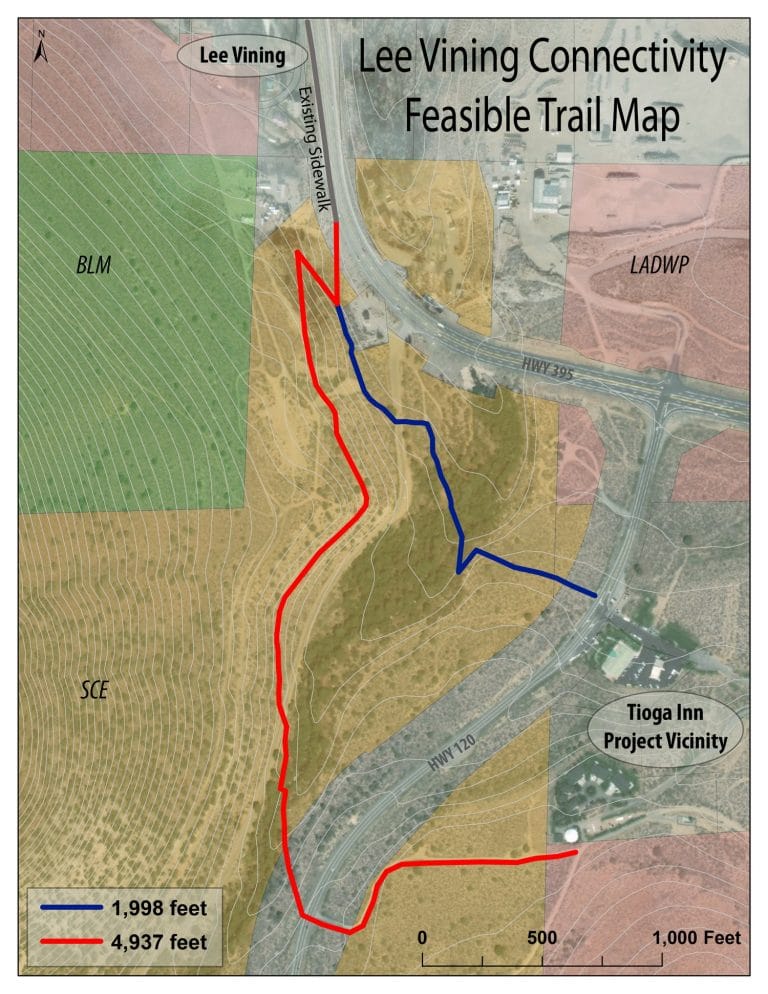
Want to know more?
The Committee has written many articles about the Tioga Inn project as well as the overall process, which you can find below. Additionally, public comment letters as well as formal project documentation can provide the most complete picture for this very complex issue.
Can’t find what you’re looking for or have a question? Give us a call: (760) 647-6595.
KEY ARTICLES:
- Mono Lake Committee analysis of the Alternative #7 Hybrid Plan (8/4/20)
- Mono County Supervisors tackle the big picture on Tioga Inn (7/1/20)
- Tioga Inn project threatens Mono Lake views and creates harmful impacts (6/23/20)
- Tioga Inn project goes before Planning Commission (4/11/20)
- Tioga Inn Final SEIR released (2/29/20)
- Decision on Tioga Inn project near (2/27/20)
- Tioga Inn development proposes significant adverse impacts (11/21/19)
- Over 700 comment letters submitted (8/22/19)
- A 100-unit workforce housing village proposed (7/25/19)
- Tioga Inn project at the Mobil Station moves forward after 23 years (11/14/16)
RELATED RESOURCES: Tioga Inn Specific Plan & FSEIR Supporting Documents | December 2020 Mono Lake Kootzaduka’a Tribe letter requesting meeting postponement | December 2020 Mono Lake Committee letter Supporting the Kootzaduka’a Tribe’s request | October 2020 Mono Lake Committee letter To the Mono County Board of Supervisors | October 2020 Letter to the Mono County Board of Supervisors from the law firm of Shute, Mihaly & Weinberger | June 2020 Letter to the Mono County Board of Supervisors from members of the Lee Vining community
Related Posts
Problematic Tioga Inn project denied at April 20, 2021 Mono County Board of Supervisors meeting
After three hours of public comment and deliberation, a motion to approve the Tioga Inn…
Poorly planned Tioga Inn project returns next week
The Mono County Board of Supervisors will hold their fourth public hearing on the Tioga…
Board of Supervisors postpones final decision on Tioga Inn
Today the Mono County Board of Supervisors considered final approval of the Tioga Inn project…
December 15: Final Tioga Inn hearing & decision
There will be yet another, and final, Mono County Board of Supervisors special meeting on…
Tioga Inn’s rough road, final approval vote delayed
On October 14, the Mono County Board of Supervisors certified the Tioga Inn Final Subsequent…

